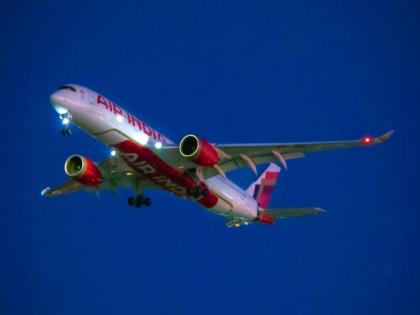Another Air India Aircraft Plunged 900 Feet After Takeoff, Hours After AI-171 Crash
By Lokmat English Desk | Updated: July 1, 2025 11:28 IST2025-07-01T11:28:23+5:302025-07-01T11:28:29+5:30
An Air India plane, which was involved in a devastating crash that killed more than 250 people in Gujarat's ...

Another Air India Aircraft Plunged 900 Feet After Takeoff, Hours After AI-171 Crash
An Air India plane, which was involved in a devastating crash that killed more than 250 people in Gujarat's Ahmedabad on June 12, 2025. Just 38 hours after the AI-171 tragedy, another Air India flight narrowly avoided a similar disaster in Delhi. The incident took place on the morning of June 14.
According to reports, Air India Flight 187, bound for Vienna, began issuing warnings immediately after takeoff. As soon as the Boeing 777 aircraft departed from Delhi, the cockpit registered multiple alerts, including stall warnings, Ground Proximity Warning System (GPWS) alerts, and “Don’t Sink” warnings, indicating that the aircraft was losing altitude rapidly.
Also Read | Tamil Nadu Firecracker Factory Blast: 4 Killed, 5 Injured in Explosion at Sivakasi Unit.
According to flight tracking data, the Boeing 777, registered as VT-ALJ, took off at 2:56 a.m. on June 14. At the time, Delhi was experiencing gusty winds and poor weather. Shortly after takeoff, the aircraft began descending rapidly, dropping to an altitude of approximately 90 feet within minutes.
Meanwhile, the stick shaker alarms were activated, causing the control column in the cockpit to vibrate, signalling the pilots of a potential aerodynamic stall. The pilots were immediately alerted to the danger and managed to regain control, stabilising the aircraft and continuing the flight safely. Although the dangerous situation lasted only a few minutes, had the pilots not acted quickly, it could have resulted in a major accident. The aircraft eventually landed safely in Vienna after a nine-hour and eight-minute flight. Later, new crew members arrived, and the plane continued on to Toronto.
Meanwhile, the pilots initially reported that the stick shaker had been activated due to the storm shortly after takeoff, but they did not report other warnings. However, when the Directorate General of Civil Aviation (DGCA) reviewed the aircraft’s flight data recorder, it found that serious warnings such as GPWS “Don’t Sink” and stall warnings had indeed been triggered. Considering the gravity of the incident, the DGCA took serious note, summoning Air India’s head of safety for an explanation. Both pilots involved in the flight have since been removed from duty pending further investigation.
Open in app